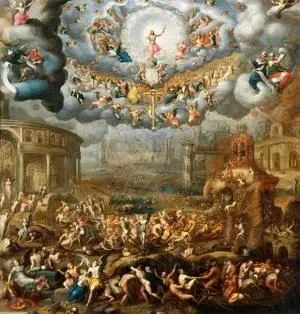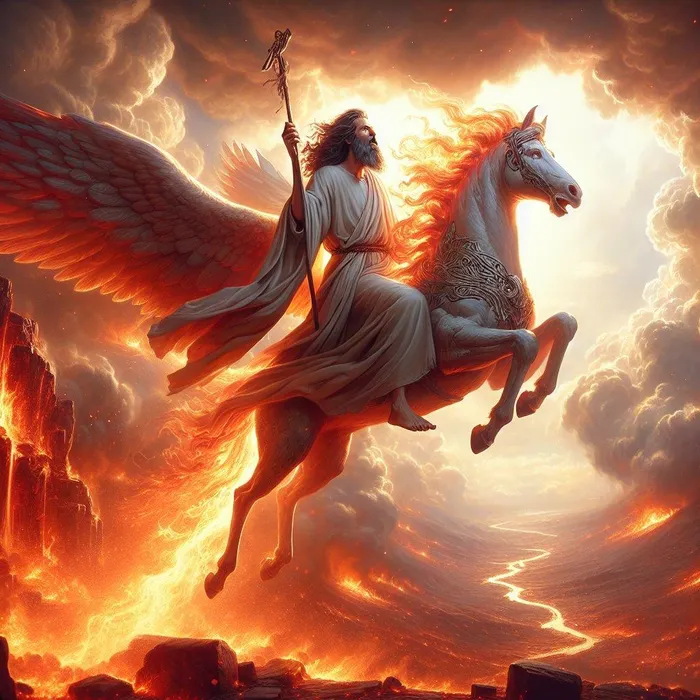Waiting for the Rapture: Judgment Day in Pentecostal thinking

Jean Cousin, the Younger: Last Judgment Last Judgment, oil on canvas c1585, in the Louvre, Paris.
Image: The Louvre, Paris.
Mookgo Solomon Kgatle
The Second Coming represents a core belief in the Christian tradition, asserting that Jesus Christ will return to Earth following his ascension into Heaven. This concept is rooted in messianic prophecies and plays a prominent role in various Christian eschatological frameworks.
The Greek term παρουσία (parousía) highlights the anticipated "Second Coming" of Jesus, focusing on his arrival and ongoing presence with his followers. A key doctrine that has arisen from this expectation is the Rapture. Within the larger context of eschatology - the study of the end times - the Rapture conveys the idea that on this significant day, all living believers and those who have passed away will be taken up to meet Jesus Christ in the air. In simpler terms, the Rapture refers to that profound moment when believers in Jesus Christ are 'caught up' to meet him in the skies, transforming their mortal bodies for eternity while those who have died in faith rise to join them.
In a broader conceptual fashion, rapture is expressed in the Old Testament, where it is noted that both Enoch and Elijah were taken up to be with God. The account of Elijah's ascent is more explicit than that of Enoch.
According to 2 Kings 2:11, it recounts, “While Elisha and Elijah were walking and conversing, a magnificent chariot and horses of fire suddenly appeared, parting them, and Elijah was taken up to heaven in a whirlwind.”

An image of the prophet Elijah being taken up into the heavens.
Image: AI
More particularly, however, as an event, it is supported by numerous verses in the New Testament, which speak about the resurrection of deceased believers and the transformation of those still alive at the last trumpet call, marking the end of our current age, divine judgment, and the beginning of an everlasting, glorious existence.
In 1 Thessalonians 4:13-18, the scripture addresses the fate of deceased believers, explaining how they will rise and unite with those still living to meet Christ in the clouds for eternity. Similarly, Revelation 11:3-12 describes the rapture through the story of two witnesses who endure challenges for a span of 1 260 days (approximately three and a half years). Despite their ability to fend off any attackers, these witnesses ultimately face defeat at the hands of a beast, leading to their demise. However, after three and a half days, they will be resurrected, hearing a heavenly call and ascending in a cloud - echoing other rapture accounts throughout scripture. Thus, both the Old and New Testaments allude to the idea of rapture in various forms.
When viewed over the course of history, the idea of the rapture becomes clearer when analyzed through the dispensationalist perspective of premillennial and pre-tribulational Pentecostal beliefs about the end times. This perspective posits that deceased Christians will be resurrected and, along with living Christians, will ascend to meet the Lord in the air before Christ’s physical return, commonly referred to as the Second Coming.
Dispensationalism entails interpreting biblical events within distinct periods or dispensations. The rapture is premillennial in nature, grounded in the belief that it will occur before Christ's thousand-year reign on earth. Additionally, it is characterized as pre-tribulational because it asserts that the rapture will transpire before seven years of tribulation on earth. This viewpoint contrasts with postmillennial interpretations, which consider the church's rapture to coincide with Christ’s Second Coming, as well as with amillennial perspectives that regard Christ's reign as already established and do not interpret the millennium literally.
The belief in the rapture is notably prevalent among contemporary Pentecostal, charismatic churches, and evangelical communities; however, this topic is also explored by various other Christian denominations and scholars.
The concept of rapture gained prominence during the early stages of modernity, particularly around the 1830s, largely due to the teachings of John Nelson Darby. Its popularity surged throughout the 20th century, especially following the release of the Scofield Reference Bible in 1909 and Hal Lindsey's bestselling work, “The Late Great Planet Earth”, published in 1970.
This notion became entrenched in mainstream American culture, bolstered by various events and cultural phenomena such as the Cold War, as well as the Left Behind book and film series, and other significant works. In recent years, the discourse surrounding rapture and related themes concerning the second coming of Jesus Christ has once again captured public interest. Notably, Pastor Joshua Mhlakela's prediction for a rapture event in early 2025 has garnered considerable attention on social media platforms like TikTok and YouTube.
This phenomenon gave rise to the #RaptureTok trend, which attracted millions of views and encompassed a wide range of content, from serious preparations to comedic interpretations. These discussions on social media are influenced by Pentecostal eschatology narratives, particularly those that utilize dreams and visions regarding events associated with Christ’s return. However, these dreams and visions must be understood within a biblical framework through a broader Pentecostal hermeneutical lens.
Mookgo Solomon Kgatle is Professor of Missiology at the Department of Christian Spirituality, Church History and Missiology

Prof Mookgo Solomon Kgatle
Image: Supplied